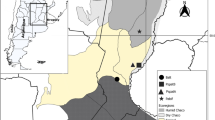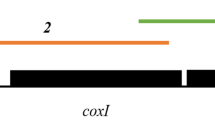Abstract
Wolbachia endosymbiotic bacteria are widespread in arthropods and are also present in filarial nematodes. Almost all filarial species so far examined have been found to harbor these endosymbionts. The sequences of only three genes have been published for nematode Wolbachia (i.e., the genes coding for the proteins FtsZ and catalase and for 16S rRNA). Here we present the sequences of the genes coding for the Wolbachia surface protein (WSP) from the endosymbionts of eight species of filaria. Complete gene sequences were obtained from the endosymbionts of two different species, Dirofilaria immitis and Brugia malayi. These sequences allowed us to design general primers for amplification of the wsp gene from the Wolbachia of all filarial species examined. For these species, partial WSP sequences (about 600 base pairs) were obtained with these primers. Phylogenetic analysis groups these nematode wsp sequences into a coherent cluster. Within the nematode cluster, wsp-based Wolbachia phylogeny matches a previous phylogeny obtained with ftsZ gene sequences, with a good consistency of the phylogeny of hosts (nematodes) and symbionts (Wolbachia). In addition, different individuals of the same host species (Dirofilaria immitis and Wuchereria bancrofti) show identical wsp gene sequences.
Similar content being viewed by others
Author information
Authors and Affiliations
Additional information
Received: 10 January 2000 / Accepted: 22 February 2000
Rights and permissions
About this article
Cite this article
Bazzocchi, C., Jamnongluk, W., O'Neill, S. et al. wsp Gene Sequences from the Wolbachia of Filarial Nematodes. Curr Microbiol 41, 96–100 (2000). https://doi.org/10.1007/s002840010100
Issue Date:
DOI: https://doi.org/10.1007/s002840010100




